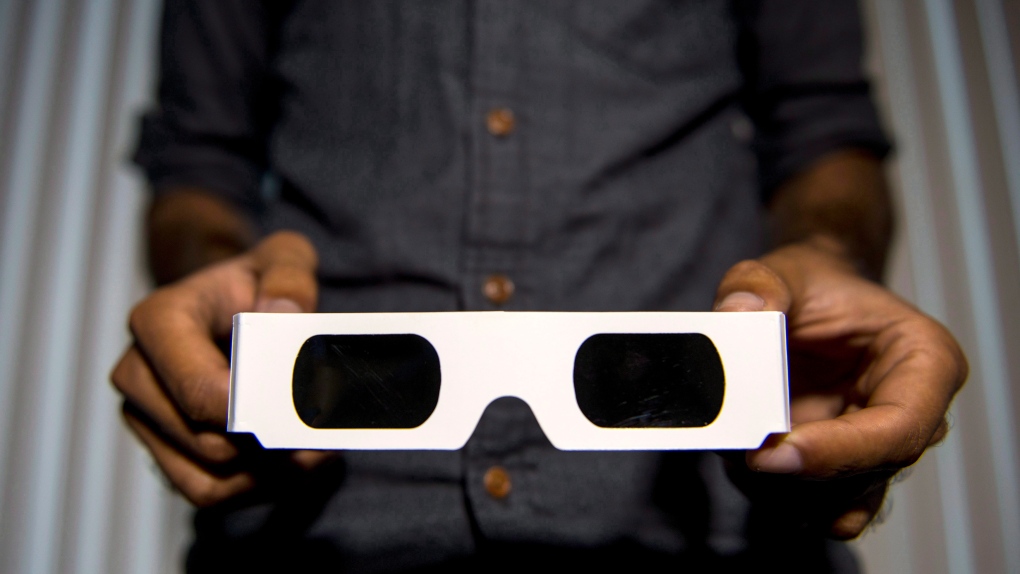These days, Mylène Gamache Tremblay spends her evenings and weekends taking orders for eclipse glasses, packaging them, and shipping them all over the eastern part of the country.
A Montreal-area online toy retailer says every waking moment — “everything. Every living moment” is spent fulfilling orders.
Eclipse glasses are a popular item in much of eastern Canada, many of which are in the path of the rare solar eclipse on April 8. But as the date approaches, demand for glasses will outstrip supply, and experts are warning Canadians to take action. It will soon be possible to ensure that you can see rare celestial phenomena without risking damage to your eyes.
Gamache Tremblay, who runs Fanique, an online store for educational and scientific toys, in addition to his day job, initially ordered a box of glasses, which he sold for about $5 each. Since then, she’s had to reorder hers nearly 10 times and isn’t sure if her supplier will still have enough stock.
However, it is already sold out at other retailers.
The Royal Astronomical Society of Canada, for example, hasn’t sold eclipse glasses online since mid-February. Executive Director Jenna Hines said the organization ordered about 50,000 units last year and another 25,000 this year. Hines said he was able to save some money by selling in-person, but he probably could have ordered several times more.
“Solar eclipses that pass through Canada, especially total solar eclipses, don’t happen very often,” Hines said in a phone interview. “It seems to be a time-honored tradition for glasses to sell out along the path of a solar eclipse.”
This demand has led to concerns that people will order glasses that offer no real protection, or worse, try to rely on sunglasses or welding glasses. According to the website for Discover the Universe, an astronomy training program run by Canadian astronomers, “counterfeit and unsafe glasses” appeared on Amazon due to high demand during the 2017 partial solar eclipse.
Hines says it’s important that the glasses meet safety standards set by the International Organization for Standardization and block about 99.999 percent of high-intensity visible light. Otherwise, people who look at the sun during the eclipse risk damaging their eyes, ranging from “temporary spots in their vision to complete blindness,” she said.
On the afternoon of April 8, Canadians who will experience totality, when the moon completely covers the sun, will be able to see through their glasses as the sun narrows and disappears. At the moment of totality, it is safe to take off your glasses and observe with the naked eye.
According to NASA, the North American totality event will begin in the morning on the Pacific coast of Mexico, then move across the United States, passing through southern Ontario, Quebec, New Brunswick, Prince Edward Island, Cape Breton Island, and over the Atlantic Ocean. It is said that they will leave the continent. Newfoundland Coast at 5:16 p.m. local time.
Hines suggests using websites like Discover the Universe and Éclipse Québec to find retailers that sell certified glasses.
He said many schools already have stock for distribution, and some retailers and scientific organizations are selling directly even if they sell out online. Organizations hosting viewing events often give out free copies, but there is a limit to the number of copies available.
Hynes said the enthusiasm for the eclipse in general was “astronomical,” with some viewing events selling out within an hour.
“Plan ahead,” she said. “Here’s our best advice to everyone: Make sure you decide where you want to go to see the eclipse and make sure you have glasses.
“If you don’t have it yet, order it now.”
– This report by The Canadian Press was first published March 15, 2024.

